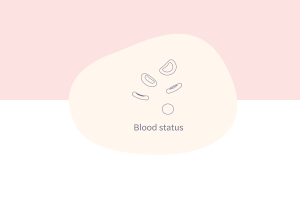Anti-Müllerian hormone (AMH)
Hormones
What is AMH?
Anti-Müllerian hormone (AMH) is a hormone produced by follicles in women’s ovaries. Follicles are fluid filled sacs that contain immature eggs. Women are born with a limited number of follicles and normally one follicle (sometimes two or three) matures during each menstrual cycle.This maturation results in the release of an egg in a process called ovulation.
The more follicles a woman has, the more AMH is produced and this can be measured by taking a blood sample. AMH levels peak during a woman’s early twenties. As a woman ages, the number of follicles in the ovaries steadily decreases, along with AMH levels in the blood. After menopause, the level of AMH will become very low and nearly undetectable.
AMH also promotes the development of male reproductive organs in boys and the levels in the blood remain high until puberty. In adult men, AMH levels are lower than males during puberty.
In short, it is useful to analyse AMH levels in the blood to:
-
Determine ovarian reserve in women
-
Determine menopausal status in women
-
Predict responsiveness to ovarian stimulation before IVF
-
Investigate fertility problems in women
-
Investigate symptoms such as acne and excessive hair growth (hirsutism)
Why is this analysis important?
AMH levels in the blood are often determined to estimate a woman’s ovarian reserve. It is usually measured together with other hormones, such as FSH, LH and oestradiol to check for fertility problems and to determine the menopausal status of a woman.
For women that wish to undergo in vitro fertilisation (IVF), the level of AMH is often measured to predict their responsiveness to ovarian stimulation. If the level of AMH is low in the blood, this means that the ovarian reserve is low and the number of eggs that can be retrieved after ovarian stimulation will also be limited.
Women with polycystic ovary syndrome (PCOS) may paradoxically have very high AMH levels but reduced fertility at the same time. This is because women with PCOS have a high number of small immature follicles that often fail to mature normally.
Results
The reference range for AMH levels in the blood can be different depending on the laboratory and technique used. Doctors usually also take into account a number of factors when evaluating AMH values.
High AMH levels in the blood may be associated with:
-
Polycystic ovary syndrome (PCOS)
-
Certain AMH-producing tumours
Low AMH levels in the blood may be associated with:
-
Low ovarian reserve
-
Premature ovarian failure
-
Menopause
-
Use of hormonal contraceptives
-
Auto-immune disease (such as type I diabetes, lupus erythematosus)
-
Previous ovarian surgery
Other Considerations
AMH levels can be used to predict IVF success, but it does not predict success in spontaneous pregnancy. Low AMH level in a woman that is having periods as usual does not mean that she will not be able to conceive naturally!
Use of hormonal contraceptives can decrease AMH levels up to 50% depending on the type. Assessment of AMH levels in a woman that uses hormonal contraceptives can therefore be misleading. AMH levels will return back to normal after discontinued use.
High AMH levels can indicate PCOS but it is not diagnostic for PCOS. Ultrasound examination of the ovaries and other blood tests such as testosterone tests are needed.
Tests that include this marker
References
Dewailly D, Andersen CY, Balen A, Broekmans F, Dilaver N, Fanchin R et al. The physiology and clinical utility of anti-Mullerian hormone in women. Hum Reprod Update 2014. May;20(3):370–85.
Sowers, M. et. al. (2008 September) Anti-Mullerian Hormone and Inhibin B in the Definition of Ovarian Aging and the Menopause Transition. Journal of Clinical Endocrinology & Metabolism Vol. 93, No. 9 3478-3483.
Loes M E Moolhuijsen & Jenny A Visser. Anti-Müllerian Hormone and Ovarian Reserve: Update on Assessing Ovarian Function. J Clin Endocrinol Metab. 2020 Nov; 105(11): 3361–3373.









